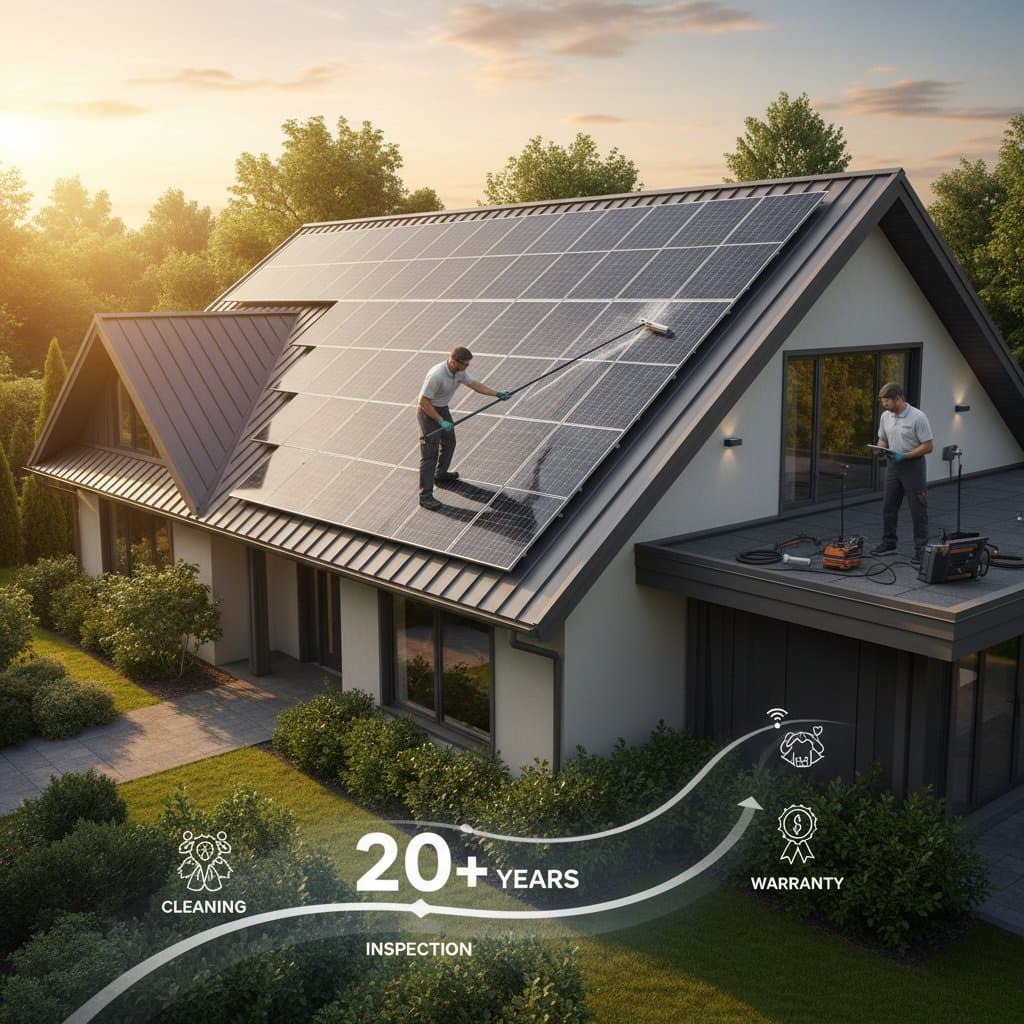Solar Panel Care Keeps Systems Running 20+ Years
Solar panels represent a significant investment in renewable energy, and proper maintenance ensures they deliver reliable performance for decades. Homeowners and commercial property owners alike benefit from understanding the essentials of care in 2025. This guide covers cleaning routines, inspection protocols, warranty details, and cost factors to help maximize efficiency and longevity.
The Importance of Regular Maintenance
Solar panels typically last 20 to 25 years or more with diligent upkeep. Neglect can lead to reduced output, premature wear, and voided warranties. Routine care protects against environmental factors such as dust, bird droppings, and weather damage, maintaining optimal energy production.
Efficiency drops by up to 20 percent if panels accumulate grime over time. Professional assessments identify issues early, preventing expensive repairs. Investing time and resources in maintenance yields substantial returns through sustained savings on energy bills.
Establishing a Cleaning Schedule
Develop a cleaning plan based on your location and system exposure. In dusty or polluted areas, clean panels every three to six months. Rain often suffices in wet climates, but manual intervention proves necessary after prolonged dry spells.
Use soft brushes and deionized water to avoid mineral deposits. Avoid harsh chemicals that might etch surfaces or damage seals. For ground-mounted arrays, hire certified technicians to reach high or inaccessible panels safely.
Schedule deep cleans annually, regardless of conditions. This practice removes stubborn residues and verifies frame integrity. Consistent cleaning preserves the panels' ability to absorb sunlight effectively.
Inspection Protocols and Costs in 2025
Annual inspections form the cornerstone of solar system health. Professionals check for microcracks, corrosion, and inverter functionality during these visits. Early detection of shading issues or loose connections averts larger problems.
Expect to pay between $150 and $300 for a standard residential inspection in 2025. Commercial systems incur higher fees, ranging from $500 to $1,500, depending on scale. These costs vary by region, with urban areas commanding premium rates due to accessibility challenges.
Infrared thermography enhances inspections by revealing hot spots indicative of faults. Combine visual exams with performance monitoring via system apps. Such thorough approaches ensure compliance with manufacturer standards.
Understanding Warranty Coverage
Most solar panels come with 25-year performance warranties guaranteeing at least 80 percent output. Product warranties cover defects in materials and workmanship for 10 to 12 years. Inverters often carry shorter terms of 10 years, with extended options available.
Warranty claims require proof of proper maintenance, including cleaning logs and inspection records. Failures due to neglect, such as improper installation or unaddressed damage, fall outside coverage. Review policy fine print to grasp exclusions for natural disasters or modifications.
Manufacturers like SunPower and LG offer robust protections, but terms evolve yearly. In 2025, enhanced warranties include labor costs for repairs under certain conditions. Securing extended coverage at installation provides peace of mind for long-term ownership.
Factors Influencing Maintenance Pricing
Location plays a pivotal role in determining costs. Coastal regions face higher expenses from salt corrosion, while inland areas deal with pollen buildup. System size directly impacts pricing; larger arrays demand more time and equipment.
Labor rates fluctuate with local economies, averaging $100 to $200 per hour in 2025. Material costs for specialized cleaners or replacement parts add to the total. Energy prices indirectly affect budgets, as owners weigh maintenance against potential output losses.
DIY options reduce expenses for basic cleaning but risk warranty invalidation without professional oversight. Bulk service contracts for multiple properties offer discounts. Evaluate these elements to create a cost-effective maintenance strategy.
Actionable Steps to Boost Efficiency
Monitor system performance monthly using built-in software or apps. Track output against expected generation to spot declines early. Address shading from new vegetation or structures promptly.
- Calibrate inverters annually to ensure peak operation.
- Secure panels against wind damage with reinforced mounting.
- Integrate bird-proofing meshes to prevent nesting debris.
These steps enhance energy capture and reduce downtime. Pair them with smart home integrations for real-time alerts on issues.
Protecting Your Investment for the Long Haul
Proper care transforms solar panels from a one-time expense into a enduring asset. Homeowners save thousands in energy costs over 20 years through peak efficiency. Commercial operators achieve faster ROI with minimized disruptions.
Warranties provide a safety net, but proactive habits extend system life beyond guarantees. Consult certified installers for personalized plans tailored to your setup. Embrace these practices to power your future sustainably.



